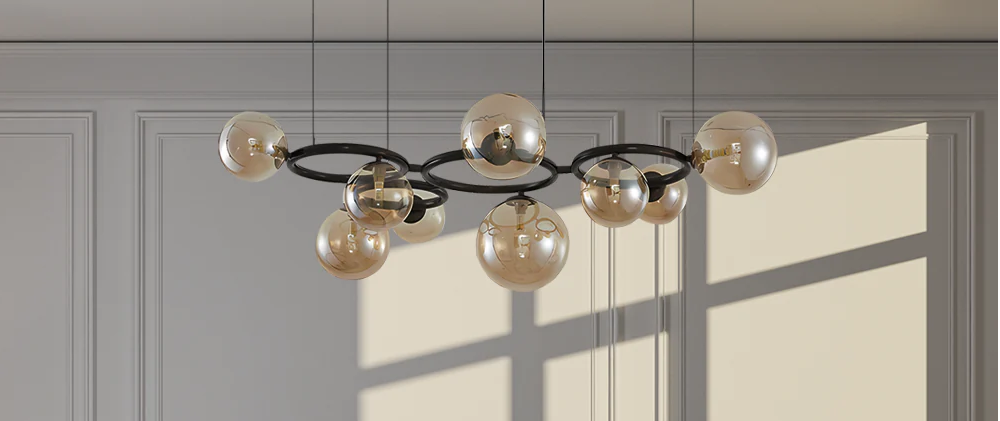Proper bathroom lighting isn't just about aesthetics—it's a matter of safety. Bathrooms are wet environments, and special care must be taken to select the right fixtures and install them safely. Here's a comprehensive guide, complete with visuals from trusted sources.
Ensuring safe and effective bathroom lighting is crucial due to the presence of water and humidity, which can pose electrical hazards. This guide outlines key considerations for bathroom lighting safety, including zoning regulations, Ingress Protection (IP) ratings, and best practices for fixture selection and installation.
Understanding Bathroom Zones and IP Ratings
Bathrooms are divided into specific zones that dictate the type of lighting fixtures permissible in each area. These zones help ensure safety by considering the proximity to water sources:
-
Zone 0: Inside the bath or shower itself. Fixtures here must be low voltage (max 12V) and have a minimum rating of IP67, indicating they are immersion-proof.
-
Zone 1: The area above the bath or shower up to a height of 2.25 meters from the floor. A minimum rating of IP44 is required, but IP65 is recommended for added protection.
-
Zone 2: An area stretching 0.6 meters outside the perimeter of the bath and to a height of 2.25 meters from the floor. Fixtures should have a minimum rating of IP44.
-
Outside Zones: Areas beyond Zones 0, 1, and 2 where no water jets are likely to be used. No specific IP rating is required, but a minimum of IP20 is advisable.
The IP rating of a fixture indicates its resistance to solid objects and moisture. The first digit represents protection against solid objects, while the second digit denotes protection against moisture. For example, an IP65 rating means the fixture is dust-tight and protected against water jets, IP44 offers protection against solid objects larger than 1 mm (e.g., tools, wires) and water splashes from any direction, IP20 means basic protection against solid objects (like fingers) but no protection against water.

Best Practices for Bathroom Lighting
1.Layer Your Lighting: Incorporate ambient, task, and accent lighting to create a balanced and functional space. Ambient lighting provides overall illumination, task lighting focuses on specific areas like the vanity, and accent lighting highlights architectural features.
2.Choose Appropriate Fixtures: Select fixtures designed for bathroom use, ensuring they have the correct IP ratings for their intended zones. For instance, ceiling lights in Zone 1 should be rated at least IP44, with IP65 being preferable for added safety.
3.Consider Fixture Placement: Install fixtures at appropriate heights and locations to avoid direct contact with water. For example, wall-mounted lights should be positioned to minimize exposure to splashes.
4.Use GFCI Protection: Ensure all electrical circuits in the bathroom are protected by Ground Fault Circuit Interrupters (GFCIs) to prevent electric shock.
5.Consult a Licensed Electrician: Always engage a qualified electrician for installation to ensure compliance with local electrical codes and safety standards.
Special Considerations for Chandeliers and Pendant Lights
While chandeliers and pendant lights can add elegance to a bathroom, their installation requires careful attention to safety codes:
-
Height Restrictions: The National Electrical Code (NEC) specifies that the bottom of a chandelier or pendant light must be at least 8 feet above the highest point of the bathtub's walls. This requirement ensures that individuals cannot come into contact with the fixture while standing in the tub.
-
Damp or Wet Ratings: Ensure that any chandelier or pendant light installed in the bathroom is rated for damp or wet locations, indicating its suitability for humid environments.
By understanding bathroom zones, selecting fixtures with appropriate IP ratings, and following best practices for installation and maintenance, you can create a safe and well-lit bathroom environment.
Additional References
-
Lustria – Bathroom Ceiling Light Collection
-
Universal Lighting – Bathroom Light Zones Explained
-
This Old House – A Lesson in Bathroom Lighting
-
Mullan Lighting – Essential Guide to Bathroom Lighting
-
Sparks Direct – The Ultimate Bathroom Lighting Guide
-
The Light Yard – Pendant Lighting as a Focal Point
-
Plumbworld – What Lights Can You Use in a Bathroom?
-
Plotted Lights – Bathroom Pendant Lighting Ideas
-
LED Supplier – Are Hanging Bathroom Lights Safe?
-
Family Handyman – Bathroom Chandeliers Guide
-
Litecraft – Guide to Bathroom Chandeliers
-
Edesia KBS – Everything to Know About Bathroom Chandeliers
-
Risun – Bathroom Chandelier Installation Guide
-
House Digest – Can You Install a Chandelier in a Bathroom?
-
Modern Bathroom – All About Bathroom Lighting
-
Addicted 2 Decorating – The Most Ignored Building Code
-
Pooky – FAQs About Pendant Lights in Bathrooms
-
Downlights.co.uk – Bathroom Zones & IP Ratings FAQ
-
This Old House – All About Bathroom Chandeliers
-
National Assemblers – Guide to Bathrooms with Chandeliers
-
Reddit – Help Me Pick a Bathtub Chandelier
- MyFixItUpLife – Chandelier Over Bathtub Tips


